Matabeleland provinces to benefit from traditional grains input scheme
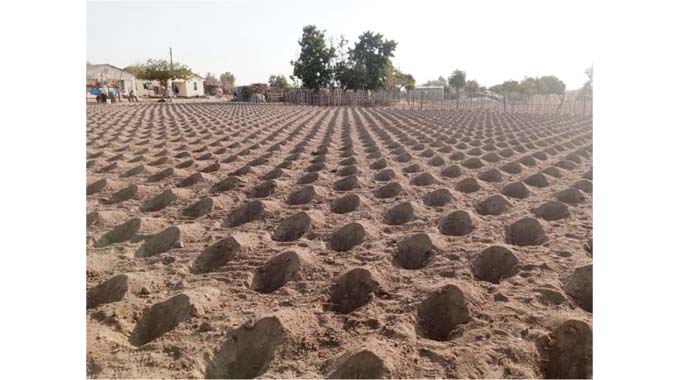
Mashudu Netsianda, Deputy News Editor
A MAJORITY of farmers in Matabeleland provinces will receive the crop input packages for traditional grains for the 2022/23 farming season under the Climate-Proofed Presidential Inputs Scheme, popularly known as Intwasa/Pfumvudza.
The Pfumvudza/Intwasa programme is set to benefit 3,5 million farmers in communal, A1, small-scale commercial farming, old resettlement and peri-urban farmers in the production of cereals, oilseeds and legumes, including a special smaller pack for 500 000 urban farmers.
The programme is supporting five Pfumvudza/Intwasa plots, each measuring 39m x 16m in size per household.
In low rainfall agro-ecological regions, three plots will be put under maize, sorghum and pearl millet. The maize plot is for household food and the other two plots under traditional grains are to produce for commercial sale.
This year farmers are expected to plant two million hectares of maize. For sorghum, the Government has set a target of 380 000 hectares to produce 304 000 tonnes while 250 000ha are set to be put under pearl millet to produce 150 000 tonnes.
Farmers are expected to plant 25 000ha of finger millet to produce 13 750 tonnes of the crop. Some farmers have started land preparations while others are procuring inputs.
Matabeleland falls under agro-ecological regions three, four and five largely characterised by a low rainfall.
Government announced that this year, the distribution of seed types and varieties for the Pfumvudza/Intwasa programme will depend on the climatic and soils of each region in order to boost production.
In the latest seasonal forecast, the Meteorological Services Department (MSD) is predicting normal to above normal rains across the country.
However, while the outlook is generally positive for the Zimbabwean farmer, there are chances of normal to below normal rainfall in regions two and three at the very start of the season.
Farmers in ecological regions one and two will get inputs to produce three mandatory maize plots and have the option to choose between sunflower, sorghum, pearl millet, groundnuts, African peas and sugar beans for the remaining two plots.
In natural region three, farmers will be supplied with crop input packages to plant two mandatory maize plots and sorghum or sunflower plots with their three optional plots comprising sunflower, sorghum, pearl millet, groundnuts, African peas and sugar beans.

Meteorological Services Department
Farmers in regions four and five will get an input package to plant one mandatory sorghum plot, one millet plot and one sunflower plot with farmers getting the option to choose between maize, African peas, ground nuts, sorghum and millet for the two remaining plots.
Generally, the Matabeleland region receives low rainfall with increased chances of mid-season dry spells that have also been increasing in length. The region experiences dry spells between January and February.
Provincial director of agricultural rural development and advisory services for Bulawayo and Matabeleland North, Mr Dumisani Nyoni said based on the agro-ecological factors, farmers in the region should concentrate on small grains and put limited hectares under maize.

Intwasa
“This year’s Intwasa/Pfumvudza cropping programme is going to be focused more on climate proofing than what we have done in the previous two seasons. This year the Government will only supply inputs to farmers based on their agro-ecological region as opposed to the farmer’s interest,” he said.
“This year, farmers in regions four and five are supposed to concentrate more on the production of traditional grains because they are able to withstand moisture stress and low levels of rainfall than maize.”
Mr Nyoni said other than sorghum and millet, the emphasis will be on the production of sunflower, cowpeas, groundnuts and sugar beans.
He said farmers in regions with higher rainfall will focus more on maize, although with an option to grow traditional grains as a stop gap measure in the event of a dry spell.
“However, we have noted that the production of traditional grains is hampered by the issue of quelea birds, fall armyworm, African armyworm and locusts hence our ministry has established a department that is specifically looking at migratory pest control,” he said.

Intwasa
“The pest control programme will be continuous to make sure that when it comes to summer cropping our traditional grains do not suffer.”
Under natural region three, which borders on areas around Lusulu in Binga District, parts of Nkayi and the western side of Hwange where there is microclimate between Matetsi and Victoria Falls, the season length averages between 90 to 100 days for a farmer to grow a crop.
Mr Nyoni said natural region four, which forms the largest component of Matabeleland North Province, stretches from Bulawayo to Nkayi, Lupane and parts of Binga and Hwange while region five incorporates parts of Tsholotsho, Hwange and Binga districts.
“We generally receive low rainfall in these regions with increased chances of mid-season dry spells that have also been increasing in length. We normally experience these dry spells during the months of January and February,” he said.
“However, it should be noted that what determines the crops that we grow is what we call season length. For instance, when you are in Tsholotsho, it has the shortest season length averaging between 90 to 100 days for a farmer to grow a crop.”
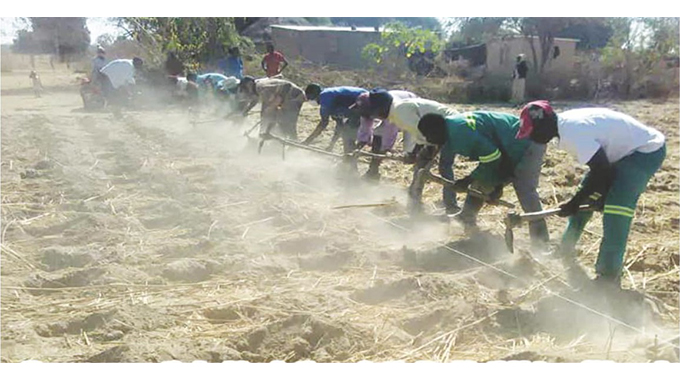
Intwasa/Pfumvudza mode of farming
Under region four, the season length is between 115 to 120 days during which a farmer can grow a crop.
“We have region three which is mostly Lusulu and we have 145 to 155 days to grow a crop. This is why those areas perform very well in terms of maize, cotton and groundnut production because the season length is much longer,” said Mr Nyoni.
“When it comes to Nkayi Business Centre all the way to Bubi and Umguza districts, we are basically looking at about 115 to 120 days to grow a crop. When a farmer chooses which crop to grow, the season length becomes the major determinant. It has to be a crop with a chance to mature within 115-120 days.”
Mr Nyoni said in terms of traditional grains, there are varieties such as sorghum and pearl millet that mature within 90 to 120 days.
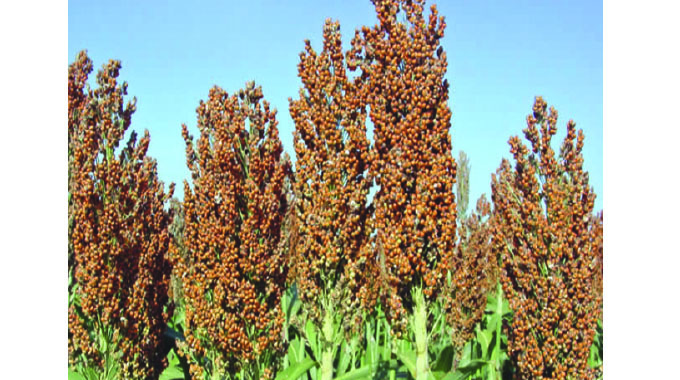
Sorghum
“There are also ultra-early maturing varieties of maize that would mature between 90-105 days. These are the varieties that would ideally be grown in areas under region three. In Tsholotsho we have always been emphasising the production of sorghum or pearl millet,” he said.
“Out of the 22 wards in Tsholotsho, you will find that predominantly 19 of them grow those crops with the remaining under maize and these are the wards that share boundaries with Umguza.”
Mr Nyoni said in the Zambezi valley in areas such as Binga and Hwange, the emphasis has always been traditional grains.
“We have also been promoting the adoption of higher yielding improved varieties of these crops. Farmers should also continue to grow indigenous varieties of these crops,” he said.
“What needs to be improved on is soil fertility and moisture management. When you have 115 days to grow a crop, you should also support it by adopting moisture harvesting technique, holing and mulching as it tends to add three more weeks of availability of moisture in the soil.”
In terms of management strategies, Mr Nyoni said farmers should employ strategies that reduce the speed of flow of water thereby increasing chances of water seeping into the ground to recharge underground water and bring up moisture levels.
Mr Nyoni said traditional grains are gaining prominence in the sense that the Government recognises the importance of growing traditional grain in dry parts of the country for their nutritious value.
The price of the traditional grains is either slightly above that of maize or the same.
“Through the summer cropping programme, we are addressing nutrition and food security and the scope for value addition by creating job opportunities. We are also import substituting as we gain ground in terms of our improved levels of production and processing,” said Mr Nyoni.
“As we expand the production and increase investment in terms of the processing of traditional grains, we will make headway in terms of adoption of these crops.”
Mr Nyoni said the province continues to receive inputs with large quantities for now being Compound D fertiliser.
“We expect to receive seed packs anytime from now and our target is to start distributing inputs by 15 September. We are at a stage where procurement of inputs is being consolidated and deliveries will begin in earnest soon,” he said.
“For Bulawayo we are targeting 40 000 farmers and 265 000 in Matabeleland North. We continue to urge farmers to continue preparing land using the traditional methods whether its tractors, ox-drawn ploughs.”
Acting provincial director of agricultural rural development and advisory services for Matabeleland South, Mr Mkhunjulelwa Ndlovu said they are targeting 130 000 farmers under Intwasa/Pfumvudza programme.
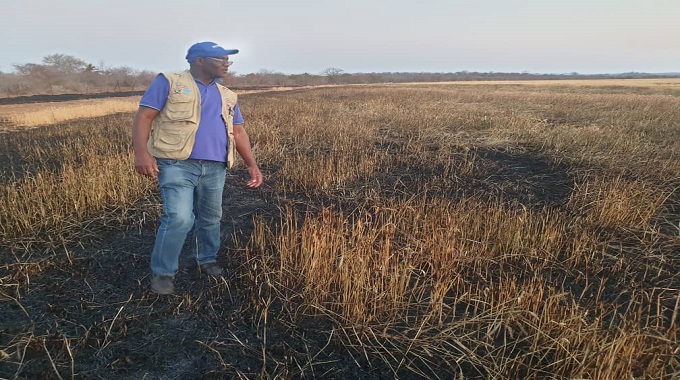
Mr Mkhunjulelwa Ndlovu
Mr Ndlovu urged farmers to intensify land preparation for them to attain high yields. He however, said they are yet to receive the inputs.
Matabeleland South falls under regions four and five. Esigodini and parts of Matobo and Insiza districts are categorised under region four while Mangwe, Bulilima, Kezi and Gwanda and Beitbridge are under region five.
Mr Ndlovu said under region five, more emphasis is on traditional grains while region four is maize and traditional grains.
Government has already released $20 billion towards the programme. This year’s target means an additional 1,2 million households will benefit from the Pfumvudza/Intwasa programme, after 2,3 million households participated last year.
Under the programme, each farming household will get an input package comprising 10kg maize seed, 5kg sorghum, 2kg pearl millet, 5kg soya beans, 2kg sunflower/castor beans and 5kg of either sugar beans, cowpeas or roundnuts.
Some farmers will get 5kg of summer wheat, long season variety, 2x50kg of Compound D fertiliser, 1x50kg top dressing fertiliser and chemicals for fall armyworm or stalk borer control.
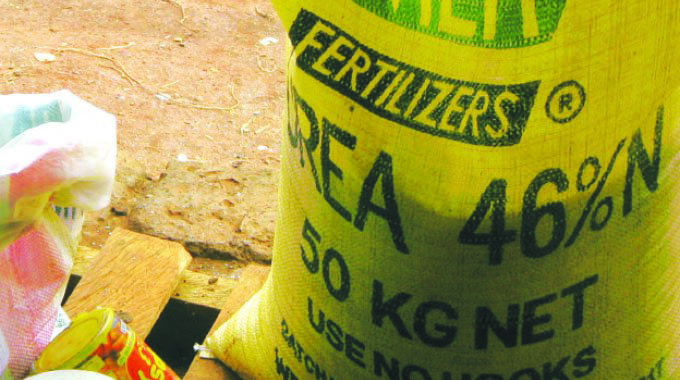
fertiliser
Farmers adopted the Pfumvudza/Intwasa concept based on the principles of minimum soil disturbance (holing out), mulching to conserve moisture, timeliness of operations and adoption of good agronomic practices.
National food self-sufficiency is key to the Government’s economic blueprint, the National Development Strategy 1, which identifies food security and nutrition as key drivers of economic revival. – @mashnets.





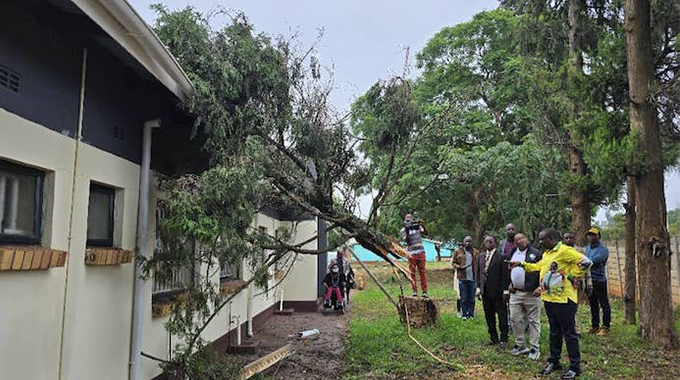






Comments